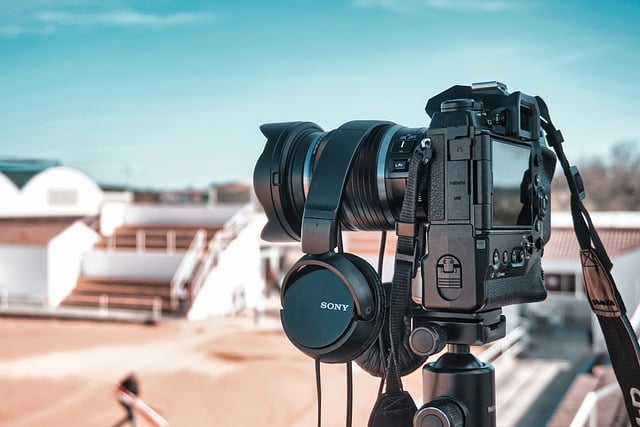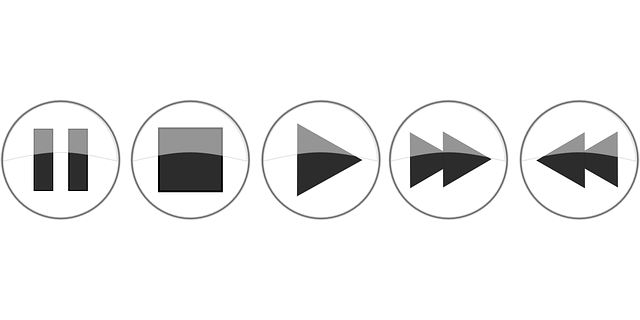Converting DivX to MP4 offers significant advantages in video compatibility and portability. DivX, known for high compression without quality loss, is ideal for reducing file sizes, while MP4's versatility allows for various media types. Converting between these formats ensures universal device compatibility, smaller file sizes, superior playback quality, and flexibility for editing. Using a reliable conversion tool, users can easily transform DivX to MP4, enabling wide-range playback on smart TVs, online streaming, and post-production software.
Looking to seamlessly share your videos? Discover the benefits of converting DivX to MP4, a popular and versatile file format. This guide dives into the world of these two codecs, explaining their unique strengths. We’ll explore why converting DivX to MP4 is advantageous, walk you through the conversion process step-by-step, and reveal the diverse playback options now at your fingertips.
Understanding DivX and MP4: File Formats Explained

DivX and MP4 are two popular video file formats, each with its own strengths and use cases. DivX, developed as an open-source alternative to proprietary formats, is known for its high compression rates, maintaining excellent video quality even in smaller file sizes. This makes it a preferred choice for users who want to reduce video size without compromising visual experience, often ideal for online streaming or sharing on platforms that limit file dimensions.
On the other hand, MP4 (MPEG-4 Part 14) is a container format widely supported across devices and platforms. It’s not just limited to video but can house various media types, including audio, images, and even subtitles. This versatility makes MP4 the go-to format for many, especially with its robust support in modern devices. For instance, converting DivX to MP4 allows users to access their videos on virtually any device or platform, ensuring compatibility without sacrificing quality.
Advantages of Converting DivX to MP4

Converting DivX to MP4 offers several significant advantages for multimedia enthusiasts and professionals alike. One of the key benefits is compatibility—MP4 is universally supported across various devices, media players, and platforms, ensuring your content reaches a wide audience without any format-related barriers. This conversion also enhances portability, as MP4 files are typically smaller in size compared to DivX, making them easier to store, share, and stream online.
Additionally, MP4 is known for its superior playback quality while maintaining efficient compression. This means that your video content will look sharp and clear on different screens, from high-definition TVs to smartphone displays. The format also allows for more flexibility in terms of editing and further conversion, as it supports a wide range of codecs and can easily be adapted for specific devices or platforms.
The Process: Step-by-Step Guide to Conversion

Converting DivX to MP4 is a straightforward process that allows users to enjoy their videos in a widely supported format. Here’s a step-by-step guide to help you through the conversion process:
1. Choose a Reliable Conversion Tool: Start by selecting a high-quality video converter that supports DivX input and MP4 output. Many free options are available online, or you can opt for premium software with advanced features. Ensure the tool is compatible with your operating system.
2. Import Your DivX File: Open the conversion software and locate the “Add Files” or “Import” button. Navigate to the location of your DivX video and select it. The software will load the file, ready for conversion.
3. Select MP4 as Output Format: Look for an “Output Format” or “Container” setting in the converter’s options. Choose MP4 from the list of available formats. This ensures your converted video can be played on most devices and media players without compatibility issues.
4. Adjust Conversion Settings (Optional): Depending on your needs, you might want to tweak some settings. Common adjustments include changing resolution, bit rate, or encoder. For simple conversions, leave these at the default values.
5. Start the Conversion Process: Once you’re satisfied with the settings, initiate the conversion. The software will process the DivX video and create an MP4 file, ready for viewing on your preferred devices.
Diverse Playback Options Post-Conversion

After converting a file from DivX to MP4, users enjoy a wide array of playback options tailored for diverse devices and platforms. The MP4 format is universally compatible with most media players, from those on desktops to mobile phones and tablets. This versatility ensures that your content can reach a broader audience, regardless of their preferred device or operating system.
Furthermore, the conversion process allows for adjustments to video quality, resolution, and codec settings, providing users with the flexibility to optimize playback according to their needs. Whether it’s for streaming online, playing on a smart TV, or editing in post-production software, the ability to seamlessly convert DivX to MP4 opens up numerous possibilities for content distribution and consumption.
Converting DivX to MP4 offers a seamless way to unlock diverse playback options, ensuring your media content is compatible with various devices and platforms. By understanding the benefits and following a straightforward conversion process, you can easily adapt your video files for optimal viewing experiences. This flexible approach allows users to access their favourite videos without restrictions, making it a convenient and popular choice for media enthusiasts worldwide.
